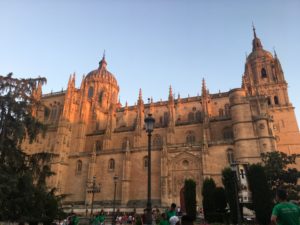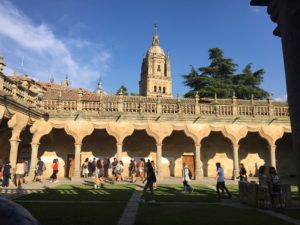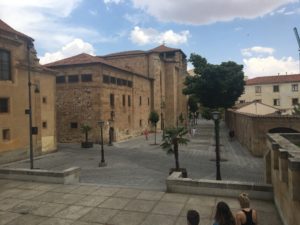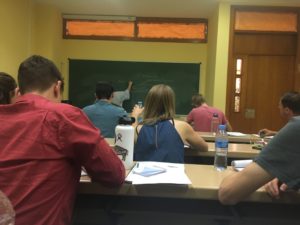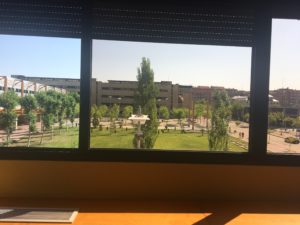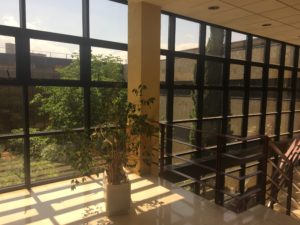Every weekday I attend Spanish classes from 9:00 to 13:15 (when in Spain, keep time as the Spaniards do 😉 ). On my first morning in Salamanca, I took a placement test that determined which level of classes I should be in. The level I tested into suits me well not only because I find the content difficult yet manageable, but also because the class atmosphere is very lively; my classmates participate a lot in class, and they are all more dedicated to becoming fluent in Spanish.
For the first two hours of the day, I attend a grammar class taught by Charo, who is a great professor; she’s willing to joke around with us, but she takes our comprehension of the material seriously. In class, we review Spanish grammar concepts that are particularly difficult. For example, we’ve studied the different uses of the two verbs that mean “to be” — “ser” and “estar” — as well as when to use the subjunctive tense or indicative tense. Although I’m familiar with these concepts and the others that I’m learning in the grammar class, determining when and how to use them has always caused me to second-guess my Spanish writing and speaking. The grammar class alone won’t allow me to reach complete confidence with the material, but it already has significantly improved the comfort I have with the challenging concepts.
During the third and fourth hours of my school day, I take electives. The electives are Spanish History and Spanish Art, which I mentioned in my previous blog post. Pacho, the professor who teaches both courses, loves to relate what we learn about Spanish history and art to current Spanish culture. Since my last post, my history class has studied the 1930s in Spain, which witnessed the Spanish Civil War — I finally know what Franco looks like and what the ideologies of the two opposing sides were! In my art class, we’ve learned about the differences between Romanesque, Gothic, and Renaissance architecture. I love that when I’m learning about these art styles in class, Pacho shows photos of the buildings downtown as examples. Living in such an old city is still surreal at times.
Speaking of the historical aspect of Salamanca, next week our classes are going to be held in the Old City. The Old City was declared a UNESCO World Heritage Site, and it’s my favorite place to be in Salamanca. Hence, I’m looking forward to the move, even though I like the current building my classes are in.
